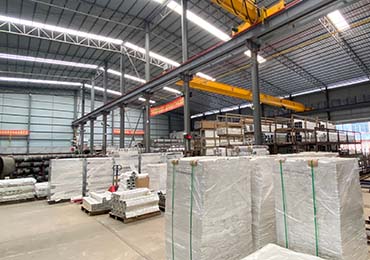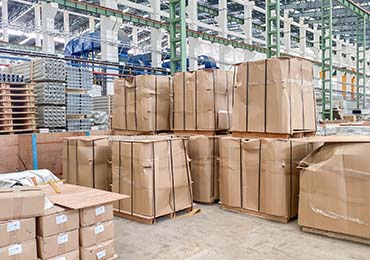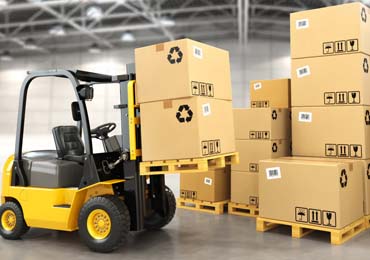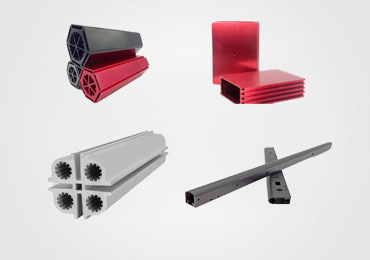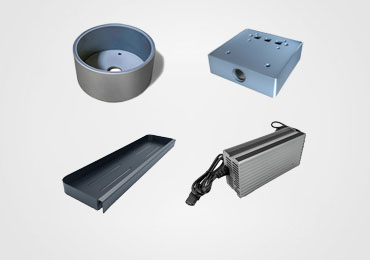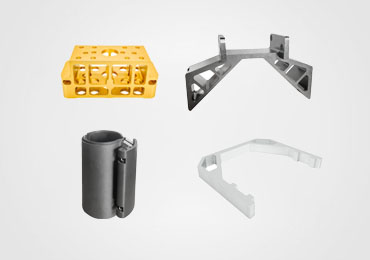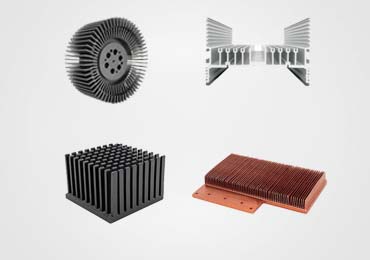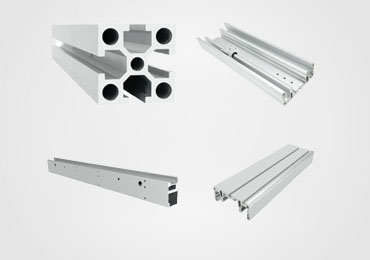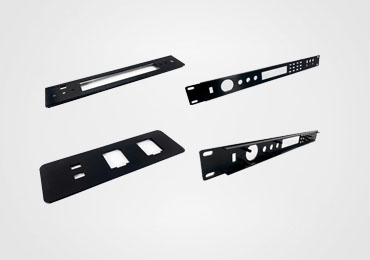- One-stop Design & Manufacturing Solutions
- High-end precision manufacturing technology
- Exclusive custom manufacturing
- Factory direct sales save your cost




OEM Aluminium Profile Section Manufacturer
We can customize all sizes and colors of aluminum profiles, and we will customize material selection and craftsmanship according to your specific needs. The tolerance of precision aluminum profiles can reach ± 0.02MM.
1. One-stop Design & Manufacturing Solutions
2. High-end precision manufacturing technology
3. Exclusive custom manufacturing
4. Factory direct sales save your cost
Your Preferred Aluminium Profile Wholesalers and Manufacturer
We focus on industrial aluminum profile custom service for 15 years, with high precision quality level, with a team of 20 engineers and 15 sales. A professional team designs drawings, selects materials, and formulates production processes, which can meet your arbitrary customized specifications and shapes, and can be mass-produced.
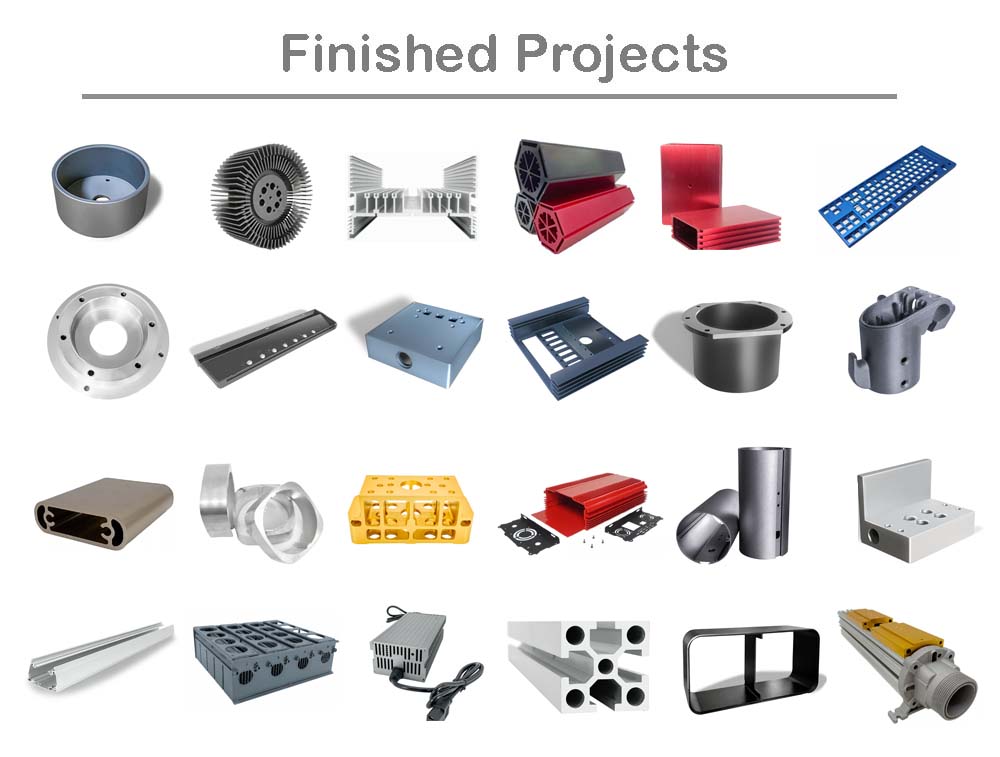
| Item Type | Industrial Aluminum Profile |
| Material | Aluminum, customizable |
| Size | Customized size |
| Colors | Silver , black, blue, customizable colors |
| Shape | Customized |
| Thickness | Customized |
| Application | Audio panel, Suitable for large stage audio, KTV audio, Cinema, Home theater |
| Production Process | Customized |
| Finish | Anodizing, mill finish, electroplating, polishing, Sandblasted, Powder coating, Silver plating, Brushed, Painted, customized |
| Deep process | Bending,decoiling,welding,punching,cutting, broaching, drilling, etching/chemical processing, laser processing, milling, other processing services, rapid prototyping, turning, wire cutting |
| Tolerance | ±1% |
| Length | Customized length |
| MOQ | Low MOQ |
| Packaging | standard export packaging or as discussed |
| OEM & ODM | Available. our engineer can check and discuss your design |
| Free Samples | Yes, we can provide free sample |
| Delivery time | 15-21 days |
| Port | As discussed |
Contact our sales engineer for searching the request size for you.
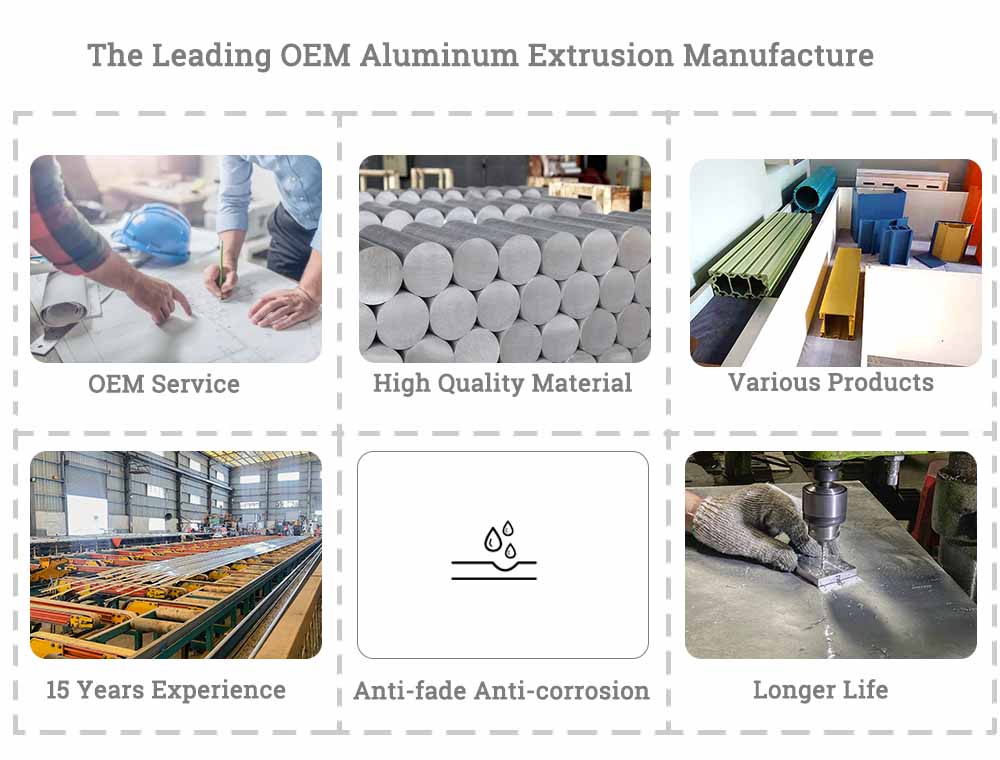
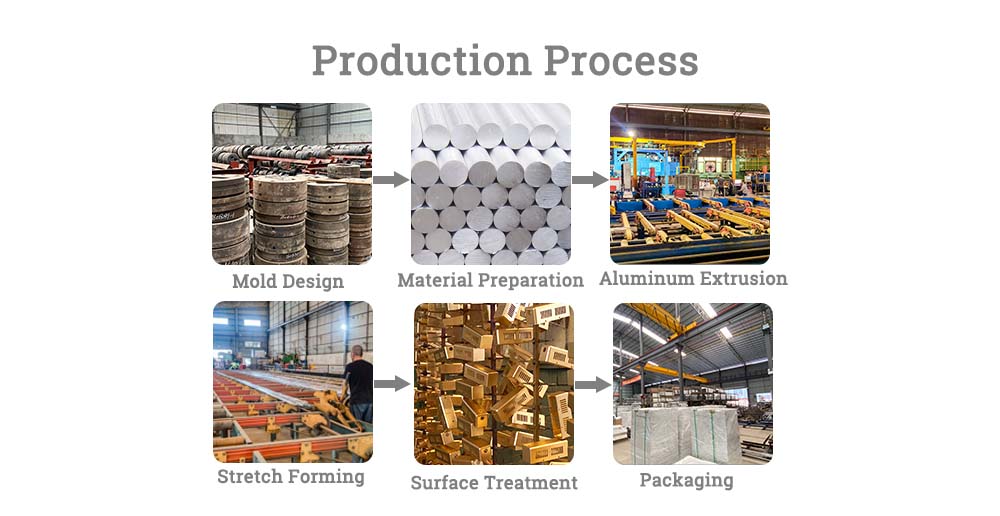

AL specializes in the production of industrial aluminum profile. We provide a large number of different types of industrial die casting for customers in different industries.We provide one-stop gold design and production services for die-casting, saving you time and reducing costs.
- Package
AL: Your Leading Industrial Aluminum Profile Supplier
AL Industrial Aluminum Profile are made of aluminum alloy.
We can customize all sizes and colors of aluminum profiles, and we will customize material selection and craftsmanship according to your specific needs.
The tolerance of precision aluminum profiles can reach ± 0.02MM.
Aluminum profiles are widely used in industries such as radiators, electronics, aerospace, transportation, and construction.
Aluminum Extrusion Companies - Ultimate FAQ Guide
Industrial aluminum profile are an products in daily life, and when applied to all aspects of our lives, they can be seen anywhere:
Car
Electronics
Building materials
Radiator
We will provide this useful guide to answer most of your questions about Industrial Aluminum Profile.
Why do you need to open a mold for the production of aluminum profiles?
Aluminum extrusion is a general mechanical manufacturing process that can be used to produce a wide range of cross-sectional profiles,
such as rods, tubes, and profiles. The aluminum profile mold requires special technology to ensure that the parts are not damaged in the
high temperature environment. In this paper we will discuss the various marking technologies that are used to mark the aluminum profile.
In summary, we will look at the processing process of the aluminum extruded profile.
The modern process of extruding aluminum billets is based on a shaped die opening. The die opening is shaped to match the cross- sectional
profile desired by the extruder. The extrution manufacturer can choose from a variety of die opening options. Once the aluminum alloy material
has been expelled through the die opening, it is allowed to cool.
Many standard and custom aluminum extrusion companies use a runout table to ensure that the components do not stick to the die during the
cooling process. The cooling chamber is heated to the appropriate temperatures to ensure the billet does not freeze. The aluminum billet is then
removed from the die and placed on the runout. It is then cut to the desired length. Then, the billet is placed on an extruded press, where it is
pushed through a die to form the desired shape.
The billets heating, cooling, and tension straightening processes, along with the sawing and cutting processes, are used to fabricate the desired
specification of rod or profile. Extrusion aluminum is a cost-effective manufacturing process that can be used to produce products in various
shapes and properties. These material characteristics make extruding profiles an effective manufacturing process for several industries.
The extruder can also use an automatic production line.
As a result, the parts produced have consistent dimensions and are of high quality. In comparison, aluminum injection molds require extra thermal
processing. Injection molds are made from soft aluminum, which requires less maintenance and care than rod. The cycle time of an injection molding
process is shorter than that of an extrusion process.
Features such as high injection pressure and the ability to apply heat and pressure to the mold cavity, require less skilled labor. Aluminum injection
molding is used in several part manufacturing industries such as plastics, rubber, fiberglass resin, and amorphous metals. Aluminum plastic injection
molding molds can be used to produce parts with high precision, accuracy, and repeatability. The thermal processing of the aluminum molds
requires a temperature of about 450 °F (232 °C), which is higher than the temperature required to melt the materials used in the mold.
The three blow molding processes are extrusion blow, injection blow, and injection stretch blow. These processes are used to manufacture small hollow
parts such as water bottles, cosmetic containers, and other glass, plastic, and metals-based containers and bottles. Extrusion Blow Molding:
This process is used to make water bottles.
Aluminum profile hardness control and coloring
1, Aluminum Profile aging furnace temperature settings and control: Usually, the aging furnace temperature and aging furnace surface temperature
there is a certain error, set the table temperature according to the actual temperature of the furnace to be set, China's renewable copper technology
and Market and pay close attention to the aging furnace temperature fluctuations.
2, industrial Aluminum Profile aging insulation: to strictly in accordance with the requirements of the process to time, the insulation time to be appropriate
to prevent the aging or overtime caused by the hardness is not enough.
3, Aluminum Profile extrusion frame can not be too dense, between the material and the material should be separated, especially the non-ventilated small
material, thick material interval is even greater, pipe material and small material, sheet material together when a box , Pipe material to put the following is
conducive to the regular cycle of air supply.
When the aluminum profile of the alloy in the silicon content is low, the impact of iron is more obvious, silicon high to a certain extent, reduce the harmful
effects of iron, then iron and silicon to form AlFeSi intermetallic compounds, but also consumed Part of the excess silicon. Iron is mainly due to the
color of the formation of iron and aluminum to form a sharp or rod-like organization, ranging from a few microns to tens of microns, the electrode
potential and aluminum is different, it affects the oxidation uniformity and continuity of color.
But also the oxide film luster And the transparency is reduced, affecting the coloring effect
Industry access threshold will improve the aluminum alloy processing industry investment scale, standardize the industry disorderly competition, to
focus on product quality, energy saving enterprises to create a good competitive conditions.
With the national industrial policy, industrial restructuring and consumer demand for product quality improvement, aluminum processing industry,
extensive, low value-added status of the gradual change.
Aluminum products will continue to increase the internal integration of the industry, some products positioning middle and low market and production
technology and equipment technology backward enterprises will face the market, capital, cost, energy consumption, technology and other
aspects of the pressure, part of the production process leading , Excellent quality, market-oriented, innovative ability, management of advanced
enterprises will occupy more market share.
With the integration of the Aluminum Profile industry, the merger of the Aluminum Profile will accelerate, and the enterprise will develop toward the
group, the large, the specialization and the brand. Product technology development, quality management, sales and service, such as the overall
strength of enterprises become bigger and stronger key factors.
Aluminum Profile surface treatment methods generally exist anodizing, electrophoresis coating and powder coating three kinds of treatment,
each way has its own advantages, occupy a considerable market share.
Powder coating has the following advantages:
1, the process is relatively simple, mainly due to the production process of the main equipment of the automatic accuracy of the improvement of
some of the major technical parameters can be achieved microcomputer control, effectively reduce the difficulty of process operation,
while greatly reduce the auxiliary equipment;
2, Aluminum Profile of the high yield, under normal circumstances, if the measures properly, to maximize control of the production of substandard goods;
3, energy consumption significantly reduced, in the ordinary anodizing, electrophoretic coating production process, water, electricity consumption is quite
large, especially in the oxidation process. Rectifier output current can reach between 8000 ~ 11000A, the voltage between 15 ~ 17.5V, coupled with the
machine's own heat, need to keep using circulating water for cooling, tons of power consumption is often around 1000 degrees, While the reduction of
ancillary facilities can also reduce some of the power consumption;
4, the degree of pollution of water, the atmosphere to reduce the alkali, sulfuric acid and other liquid organic solvents are no longer used to reduce
water and air pollution, but also effectively improve the Aluminum Profile and environmental protection products as the competitive strength of steel
profiles, accordingly Reduced some production costs;
5, Aluminum Profile workers significantly reduced the labor intensity, due to the use of automated assembly line operations, feeding methods and
the use of fixtures have been significantly simplified, improve production efficiency, but also reduce labor intensity;
What Is The Quality Identification Method Of Aluminum Profile?
In computer vision, deep learning targets are usually natural images including pedestrians, vehicles, animals, and human faces,
but studies of detecting surface defects on aluminium profiles using deep learning are scarce. In this work, Krizhevsky and co-authors
proposed a multiscale defect detection network to detect surface defects in aluminium profiles, based on CNNs. Currently, surface treatments
methods of aluminium profiles used in doors and windows mostly involve anodizing, electrophoresis, powder-coating, and powder-coating with wood grains.
In the field inspection, acid etching technique, that is, using acetone for cleaning aluminum profile surfaces for oil and dust removal, is
commonly used. This paper presents an alkali-drop test, which is, in 35+-1, dropping a solution of sodium hydroxide about 10 mg & 100 g/L
onto aluminum profiles surfaces, visual inspecting till the corrosion bubbles are formed, and the time for oxidation films to penetrate was calculated.
That is, at 35 +- 1, drop about 10mg, 100g/L NaOH solution on the surface of aluminum profiles, visually inspect droplets until corrosion bubbles are formed,
and compute the penetration time of the oxide film.
If an aluminum extrusion producer uses the domestic 6063 aluminium ingot, then the quality of the raw materials is guaranteed.
A very important part of the production process of the aluminum extrusions and quality assurance is to check that the parts that we
produce are meeting the customers dimension requirements. Aluminum bars have innumerable applications in construction and manufacturing
industries, so each products quality needs to be flawless.
The surface finish on extruded products is flawless, and generally speaking, these products are stronger than cast aluminium. One of the most
commonly used options to extrude aluminium alloys is alloy 6063, which offers high-quality finishes and is a great choice for extrusion.
When extruding aluminium alloys like alloy 6463, you will achieve great results when using it for bars, tubes, rods, wires, and other types of custom profiles.
Aluminum 6005 can be used for designs requiring a high-quality corrosion-resistant property as well as a moderate amount of strength.
From the surface, good quality aluminium billets are smooth, free of oils, scratches, or black spots. As customer demands on aluminium
profiles are increasing, aluminum billet materials are playing an important role in extrusion quality.
During production of the aluminium extrusion profiles, some defect will occur due to malfunctions of the extrusion machinery and the wrong
operation procedure. The ageing process will further harden the extruded profiles and make sure that they meet the specified mechanical
properties of individual alloys. Aluminium alloys in extruded form are readily damaged by outside forces as the surfaces are relatively soft, and
additional care is required to avoid undesired damage, which could result in an extruded profile being considered rejected (an unacceptable product
which does not meet standards or client specifications).
Why is aluminum alloy material suitable for spare parts?
Aluminum alloy is a high quality material that has been used in the manufacture of spare parts for many years. Its features, such as rust
resistance and excellent chemical resistance, make it an ideal choice for making spare parts. Aluminum alloy materials also have the best
strength to weight ratio which makes them perfect for successful development and manufacturing processes. Furthermore, aluminum alloys are
lightweight yet strong enough to withstand wear and tear over long periods of time.
Aluminum alloy materials are popularly used in spare parts because of their corrosion resistance, strength and malleability. Alloys make use of aluminum
with other elements such as magnesium, manganese, zinc and copper to enhance the desired stiffness for engineering structures. With its corrosion
resistance properties, aluminum alloy materials are suitable for components like bicycle frames and body panels that require larger tube diameters to
manufacture. Compared to steel plates which rust easily when exposed to air and water, aluminium alloys can last longer without being affected by corrosion.
Aluminium alloys are also widely used in automobiles due to its light weight and ability to resist corrosion.
The most common alloy in the auto industry is 6061 aluminum, which possesses great fatigue resistance and extra strength. This makes it an ideal
material for many different components, from engine blocks to brakes. Its high strength-to-weight ratio also makes it a great choice for more intricate
parts such as those used in the suspension system. The 6061 alloy is not only used to manufacture auto components but is also used in aerospace and
other industries that require a high level of performance. It has become one of the most popular materials due to its durability, strength, and corrosion resistance.
Aluminum alloy material is an excellent choice for spare parts due to its excellent fatigue properties, excellent corrosion resistance and versatility.
The reason aluminum is so widely used in aircraft and aerospace industries is because of its high strength to weight ratio, specific mechanical
properties and impact resistance. It also has the added benefit of electrical conductivity. With a spectacular range of corrosion resistant alloys, aluminum
alloy material has become an ideal choice for many industries that require parts with longevity. Its light weight and exceptional strength make it an ideal
option for the production of spare parts.
Aluminium alloy is one of the most versatile metal materials and can be used for wear castings, various types of pipe joints, and many other components.
It is also highly resistant to corrosion and has a low melting point which allows for maximum efficiency in manufacture. Due to its lightweight characteristics,
aluminium alloy parts are easier to transport than steel parts, which makes them more economical to produce. Additionally, aluminium alloys can be moulded
into complex shapes using molds and bearings, allowing manufacturers to create intricate designs with a minimum amount of work.
Aluminum alloy is especially suitable for spare parts due to its alloy bonding properties and the fact that it boasts high resistance to corrosion. This makes it
ideal for body panels, as well as other parts which require a strong, lightweight material with good fatigue strength. The primary alloying element of aluminum 7075,
one of the most commonly used alloys in the automotive industry, is zinc. This helps give it good corrosion resistance and a lightweight nature. Alloys with different
combinations of elements can also be made to improve specific characteristics such as improved corrosion resistance or better strength than aluminium alone
would provide. With its good corrosion resistance and lightweight nature, aluminum alloy is perfect for making spare parts since they will have an increased life
expectancy while still being relatively light in weight.







